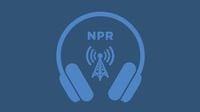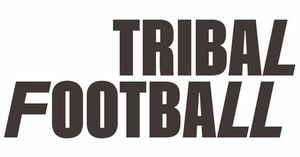As the calendar turned to October 1, 2025, a seismic shift rippled through Indiana’s public media landscape. The federal funding lifeline that had supported radio and television stations for decades was abruptly cut, joining more than 1,500 affiliates across the country now forced to chart a new financial course. For many, the impact was immediate and deeply personal.
“Things are going to get real in October,” warned Alex Curley, a former NPR staffer and the creator of Semipublic, a public media finance database hosted on Substack. His words echoed across Indiana’s newsrooms and control booths, where the mood was tense and uncertain. The loss of both federal and state support this year left Indiana among the hardest-hit states, trailing only West Virginia, Alaska, New Mexico, and Montana in terms of reliance on public money, according to data collected for Semipublic.
By late September, the consequences were already in motion. At least 18 layoffs had been announced across Indiana’s public media stations, including at Evansville’s WNIN and South Bend’s WNIT. The numbers tell a stark story: Indiana’s 17 public radio and television stations lost an average of 24% of their revenue, translating to a staggering $13 million in state and federal dollars that had previously kept the lights on and the airwaves humming. According to the USA TODAY Network, these losses were felt most acutely in six markets identified as high-risk: Evansville’s WNIN (45% revenue loss), Vincennes’s WVUB (at least 26%) and WVUT (at least 38%), Muncie’s WIPB (at least 33%), Fort Wayne’s WFWA (45%), South Bend’s WNIT (34%), Merrillville’s WLPR (42%), and WYIN (33%). These percentages are based on 2023 financial data and paint a sobering picture of the stations’ vulnerability.
The layoffs, while painful, are just one facet of the stations’ efforts to stay afloat. “Layoffs are one of the most immediate financial levers that stations can pull to help stabilize their finances,” Curley explained. Some stations have gone further, consolidating internal departments and adjusting programming to reduce costs. In Evansville, for example, a weekend lifestyle show was dropped in late September in a bid to prioritize local coverage and community events. “We’re still doing those kinds of things that make a difference in people’s lives,” said Mark Newman, executive director of Indiana’s statewide public media network. Despite the cuts, stations are rallying around major projects, such as the highly anticipated Ken Burns documentary on the American Revolution, which remains a centerpiece of their fall programming.
Across the United States, the situation is similarly dire. According to reporting from Indiana Public Media and USA TODAY, at least 354 public media employees nationwide have been laid off since mid-July. In Pennsylvania, a station is shutting down after losing a quarter of its budget. In northern Florida, a TV station is dropping its PBS affiliation, signaling a broader trend of stations rethinking their identities and affiliations in the face of shrinking resources. Even in South Dakota, where local public media has long been a staple, staff have described the past few weeks as emotionally taxing. “There’s been a lot of tears,” one staff member admitted, as reported by NPR, underscoring the human cost behind the budget sheets and programming grids.
Still, Indiana’s public media outlets are fighting to adapt. The state’s unique collaborative model, Indiana Public Broadcasting, has proven to be a crucial buffer. Formed in 1979, this coalition allows stations to pool resources, streamline internal departments, and save on operational costs. One notable innovation: Hoosier PBS stations are in the process of funneling their master control setups to a single statewide source, a move designed to cut expenses without sacrificing on-air quality. “Everybody is still here, everybody’s still holding on,” Newman emphasized. But he was quick to add a note of caution: “Can they hold on forever at the same level without sufficient funding coming in to support the work that they do? It would be completely unreasonable to think that that’s possible.”
To make up for lost government funding, stations have turned to their communities for help. Remarkably, community donations have reached an all-time high in 2025, offering a glimmer of hope amid the uncertainty. Philanthropic support, corporate giving, and individual donors have all stepped up, but station leaders remain wary. The surge in donations, they warn, may not be sustainable if donor fatigue sets in or if economic conditions worsen. Both Newman and Curley agree that another wave of financial challenges could be lurking around the corner. “People are focused on public media’s revenue loss right now,” Curley observed. “In six months to a year, when there have been other big news stories that have happened, things will be much more serious for public media stations.”
To stretch every dollar, some stations are making tough programming choices. Instead of purchasing expensive national programming rights, a few have opted to play more music or re-run existing shows. Internal department consolidation has also become more common, with stations sharing back-office functions or technical operations to keep costs down. In some cases, staff have seen their hours reduced or have been asked to take on additional responsibilities outside their usual roles.
Looking ahead, the future of Indiana’s public media—and indeed, that of stations across the country—hinges on finding a sustainable balance between outside support and internal efficiency. As the dust settles from the October funding cuts, station leaders are bracing for what comes next. The collaborative spirit that has helped Indiana weather the first wave of layoffs and program changes will be tested yet again if donations decline or if further cuts become necessary.
For now, the story of Indiana’s public media is one of resilience in the face of adversity. Stations are holding the line, determined to keep serving their communities with local news, educational programming, and cultural events. But as the financial pressures mount, the question remains: How long can they keep it up without the federal safety net?
The coming months will reveal whether Indiana’s public broadcasters can reinvent themselves for a new era—or if the losses of 2025 mark the beginning of a more permanent contraction in the state’s media landscape.




